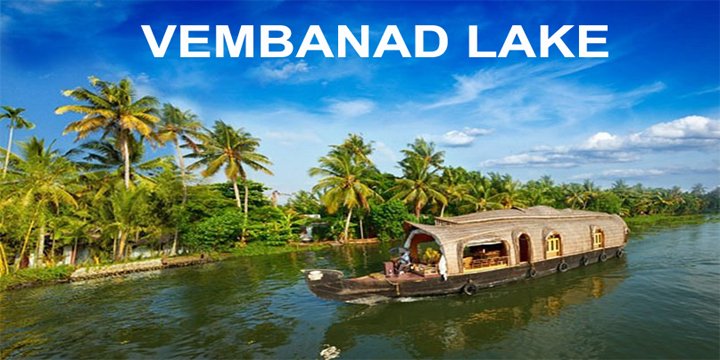VEMBANAD LAKE
- Vembanad Lake, Kerala’s largest wetland and a Ramsar site, is under severe ecological stress due to:
- Unregulated tourism, particularly overcapacity of houseboats.
- Pollution, illegal encroachments, and land reclamation.
- Recent reports (CWRDM, NIO) and local testimonies warn of the lake’s shrinking size, loss of biodiversity, and threats to local livelihoods.
- Scientists and activists say Vembanad may be “scripting its own obituary” unless urgent measures are taken.
- Location: Kerala (Alappuzha, Kottayam, Ernakulam districts).
- Significance:
- Longest lake in India.
- Largest wetland in Kerala.
- Designated Ramsar Site (since 2002).
- Connected Rivers: Pamba, Meenachil, Achankovil, and Manimala.
- Biodiversity hotspot: Home to mangroves, migratory birds, and endemic aquatic species.

ECOLOGICAL & SOCIO ECONOMIC IMPORTANCE
- Flood Control: Acts as a buffer against monsoon floods.
- Agriculture: Supports paddy cultivation, especially in Kuttanad (Rice Bowl of Kerala).
- Fisheries: Livelihood for thousands of families.
- Tourism: Major revenue generator – houseboats, shikaras, and eco-tourism.
THREATS & ENVIRONMENTAL STRESSORS
1. Tourism Pressure
- Unregulated expansion of luxury houseboats:
- Safe capacity: 461 | Actual: 954
- Plus: 241 shikaras, 404 motorboats, 1,625 country boats.
- Consequences:
- Untreated sewage discharge → Water pollution.
- Diesel engine use → Oil leaks, air & water pollution.
- Churning wakes → Sediment disturbance, erosion of lake banks.
2. Encroachment & Urbanization
- Shrinking size:
- From 130.68 sq km (1967) to 3.29 sq km (2011).
- Receding at ~0.3 sq km/year.
- Causes:
- Illegal land reclamation.
- Gulf-funded resorts, apartments.
- Blocked natural channels.
- Example: Maradu Demolition (2019) – 26,000+ violations revealed.
3. Livelihood Crisis
- Fisherfolk losing access to fish-rich zones.
- Fish migration disturbed by pollution, noise, and congestion.
- Traditional practices (like stake net fishing) disrupted.
4. Water Quality Degradation
- Coliform levels (Punnamada): Reached 8,000+ → indicates fecal contamination.
- STP (Kuttanad): Remains idle despite rising sewage load.
STUDIES & REPORTS
- CWRDM Report (Centre for Water Resources Development and Management):
- Highlights overcapacity of boats.
- Recommends waste management & zoning.
- National Institute of Oceanography:
- Warns about irreversible ecological damage due to congestion.
RECOMMENDED SOLUTIONS
Institutional Recommendations:
- Ban non-local boats (from outside Alappuzha & Kottayam).
- Mandatory waste treatment facilities at all hubs.
- Zoning: Restrict access to ecologically sensitive zones.
Legal Measures:
- Declare Vembanad a Fish Sanctuary – proposed by KSSP (Kerala Sasthra Sahitya Parishad).
Policy Options:
- Cap on houseboats; enforce carrying capacity.
- Incentivize eco-tourism and solar-powered boats.
- Strengthen monitoring via satellite mapping, local participation.
CHALLENGES TO IMPLEMENTATION
- Economic vs Environmental trade-off:
- Tourism is vital for Kerala’s economy.
- Political resistance to regulation.
- Lack of enforcement despite court orders (e.g., Nediyathuruthu villas).
- Public awareness among tourists and locals remains low.
CONCLUSION
Vembanad Lake’s degradation is a classic case of environmental overreach driven by unchecked tourism, urbanisation, and weak governance. Timely interventions, community participation, and sustainable tourism models are essential to prevent Kerala’s ecological jewel from turning into a cautionary tale.
Note: Connect with Vajirao & Reddy Institute to keep yourself updated with latest UPSC Current Affairs in English.
Note: We upload Current Affairs Except Sunday.

